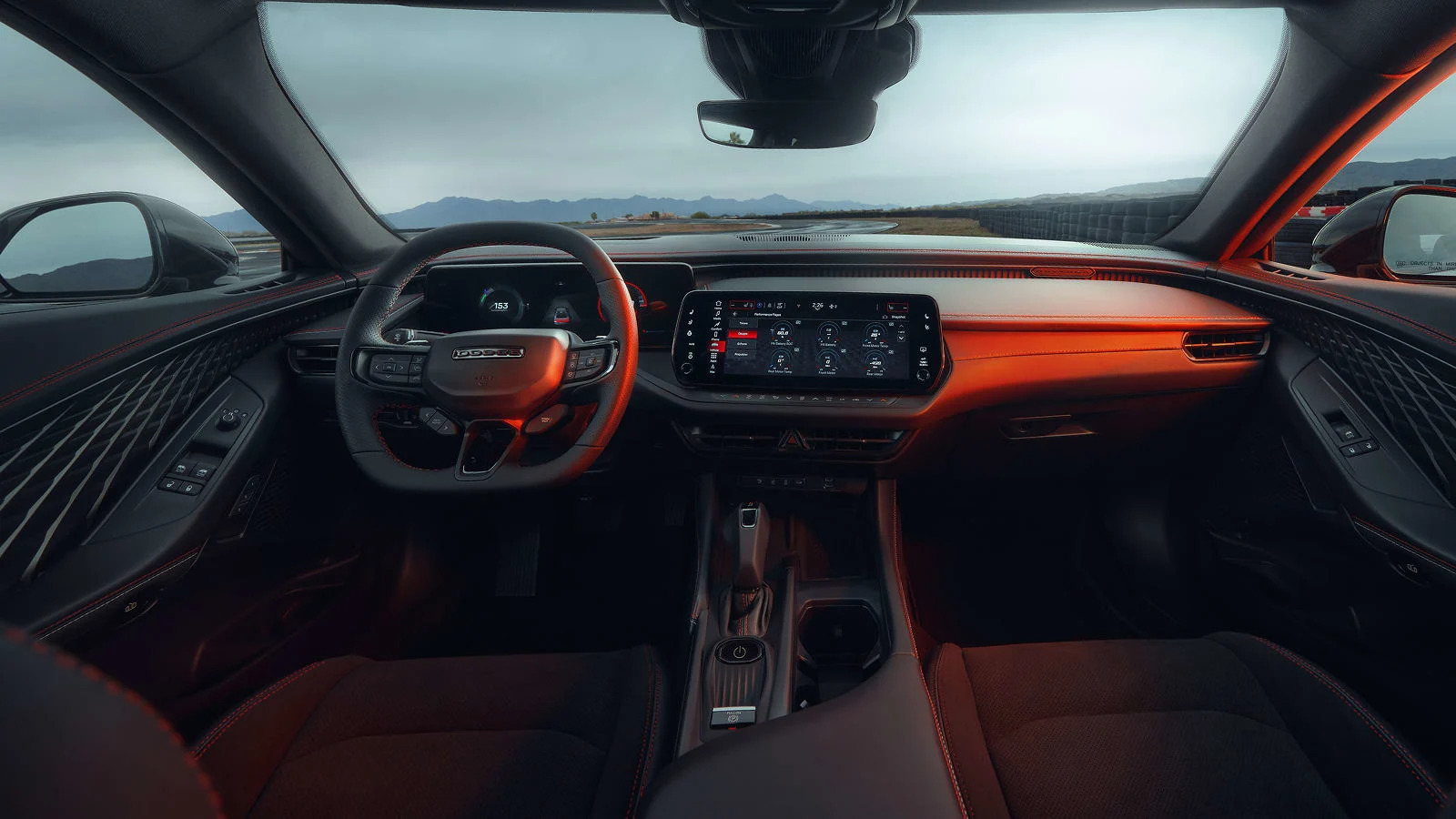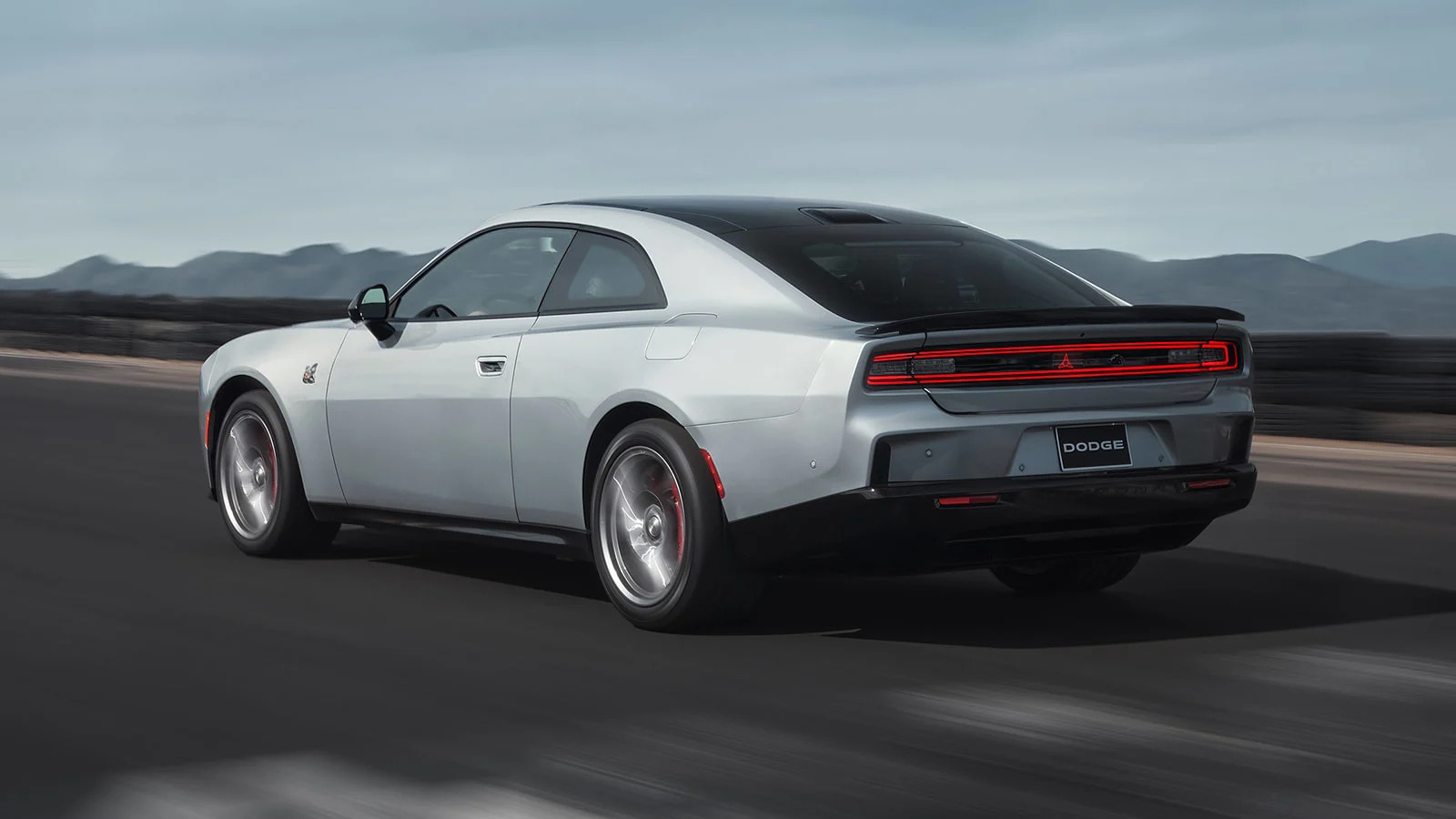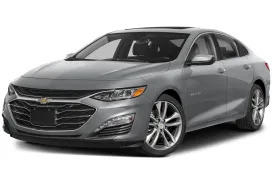The electric 2024 Dodge Charger Daytona is here, and it’s big, powerful and full of modern tech. For this new generation of Dodge muscle, we’re getting a choice between electric or gasoline power, with the electric Chargers named “Daytona” and the gas-powered ones named “Sixpack.” Those Sixpack cars will come with two versions of the new Hurricane inline-six, but before we get too deep into them, note that they won’t arrive until the 2025 model year. In the meantime, 2024 is all Daytona and all two-door, as the four-door versions of the electric Charger will arrive for 2025 around the same time as the gas-powered Sixpack.
As you’d expect from a Dodge muscle car, power is big with the Scat Pack (the most powerful version for 2024) arriving with 670 horsepower, which isn’t too far behind the outgoing Hellcat. The R/T is no slouch itself at 496 horsepower, and both are all-wheel-drive, but do note they have rear-drive modes, so the burnout king of muscle cars can still spin the rear end up. The interior of the new Charger is a breath of modern air with large screens and snappy Uconnect 5 software. And just like before with the Challenger and Charger, Dodge is going big and utilitarian when it comes to sizing, as the new Charger features a big backseat, capacious liftback-style tailgate and even bigger overall dimensions than the outgoing cars. We haven’t driven the new Charger yet to see where it stacks up in the muscle car or EV space yet, but we sure are excited to get behind the wheel to see how Dodge has transformed its legend for the new electric world we live in today.
Interior & Technology | Passenger & Cargo Space | Performance & Fuel Economy
What it's like to drive | Pricing & Trim Levels | Crash Ratings & Safety Features
What's new for 2024?
The 2024 Dodge Charger is a completely new model for 2024.



What are the Charger's interior and in-car technology like?
The 2024 Charger finally brings Dodge’s muscle car into the world of modern interiors with big screens, fanciful ambient lighting (64 colors!) and an available all-glass roof. The standard tech suite consists of a dual-screen setup, one 12.3-inch landscape-oriented touchscreen for the infotainment system running Uconnect 5, and another large screen for the instrument cluster. If you select the R/T, the digital cluster is a 10.25-inch unit, but the Scat Pack gets a larger 16-inch screen. The LED lights surrounding the cabin are programmed to coordinate with certain actions like turning the car on, opening a door and so on, but they’re a huge design element wrapping 270 degrees around the front passengers. The steering wheel has both a flat top and a flat bottom with a number of buttons on both spokes, and while Dodge is sticking with a traditional gear lever, it’s an evolution of the “pistol-grip” shifter seen in the previous Charger. The interior generally toes the line between evolution and revolution of the outgoing Charger’s interior. You’ll definitely be able to tell it’s fresh and new, but the layout shouldn’t offend the muscle car buying masses.

How big is the Charger?
The Charger Daytona is launching as a two-door coupe, which will make it a rare bird in the EV space. However, a four-door version is on its way for 2025, but it’s exciting that the two-door comes first. Most other electric vehicles on sale today are sedans, SUVs or trucks, so Dodge is offering a unique proposition with its first electric car. In its longest R/T form, the Charger Daytona measures 206.6 inches long, more than 5 inches longer than the outgoing four-door Charger Hellcat Redeye. The wheelbase is 121 inches, an inch more than the old four-door Charger. And at 79.8 inches wide, the Daytona coupe is 1.5 inches wider than the widebody Chargers
Even though the Charger Daytona is launching as a two-door, don’t count it out in terms of utility. Rear seat (offering three-across seating for a total capacity of five people) legroom is a plentiful 37.2 inches, which should make it big enough for most adults to sit back there. Of course, the four-door version will be the most useful, but we don’t have specs for this model quite yet. On top of the spacious back seat, the new Charger is a liftback, affording it significantly more space than the previous Charger and Challenger. Trunk capacity with the rear seats in place is a large 22.8 cubic feet, but put those seats down and that space expands to 37.4 cubic feet. The Charger Daytona also has a small frunk with 1.5 cubic feet of storage, but of course, the gas-powered Sixpack has no frunk.

What are the Charger’s fuel economy and performance specs?
The Charger Daytona is launching in two versions for the 2024 model year: R/T and Scat Pack.
In standard guise, the R/T produces 456 horsepower and 404 pound-feet of torque from its two electric motors, giving it all-wheel drive. One key asterisk to note is that Dodge’s peak horsepower figures are provided with the car in “PowerShot” mode that boosts output by 40 horsepower in 15-second intervals. Without “PowerShot” mode (how you’d drive around most of the time), the R/T produces 416 horsepower. To complicate matters a little further, the R/T (and the Scat Pack) come with Direct Connection kits as standard equipment for the first model year – they’ll be optional on cars in subsequent years. The Stage 1 kit applied to the R/T gives it a 40-horsepower boost, which means maximum output (when using PowerShot) will be 496 horsepower. In this guise, Dodge says it’s good for a 0-60 mph run of 4.7 seconds and will complete the ¼ mile in 13.1 seconds.
Every version of the Charger Daytona also comes with the same 100.5 kilowatt-hour battery pack. In the R/T it’s EPA-rated for 317 miles on a full charge. Charging speeds peak at 183 kW no matter the trim, which Dodge says is good enough for a 20-80% charge in just under 28 minutes when plugged into a 350-kW fast charger.
The Scat Pack ups the power ante and will produce 590 horsepower and 627 pound-feet of torque. Again, that’s with the PowerShot mode activated, and without it you’ll be looking at 550 horsepower in most driving. However, just like the R/T, the Scat Pack launch cars will all come with a Direct Connection kit standard. This one is the “Stage 2” kit, which gives the car an 80-horsepower boost, taking maximum output to a sky-high 670 horsepower. With this kit and PowerShot activated, the Scat Pack will hit 60 mph in just 3.3 seconds and do the ¼ mile in 11.5 seconds. Range takes a hit with the Scat Pack, going down to 260 miles on a full charge, and we suspect that figure could drop even further with the Track Pack.

What's the Charger like to drive?
Who knows?! We’ll update this section when Dodge lets us get behind the wheel.
What other Dodge Charger content can I read?
2024 Dodge Charger revealed: 2-door EV this year, 4-door and inline-6 next year
How would you like your Charger?

2024 Dodge Charger Daytona and Sixpack trim breakdown: Here's what you get
Compare and contrast the R/T and Scat Pack models coming at launch.

What is the 2024 Dodge Charger's Fratzonic Chambered Exhaust?
We share details about the artificial exhaust sound of the electric Charger.

Dodge still considering police packages with new Charger
Nothing is final, but CEO said police business is significant for Dodge

What is the 2024 Charger’s price?
Again, this one’s a mystery. We’ll update it once Dodge provides pricing.
What are the Charger’s safety ratings and driver assistance features?
The Charger will offer a number of driver assistance systems as standard equipment including forward collision warning with automatic emergency braking, blind spot warning with rear cross-traffic detection, traffic sign recognition, drowsy driver detection, adaptive cruise control, lane-centering and Dodge’s “Active Driving Assist” system, which is a hands-on highway assistant that can trace curves and handle stop-and-go traffic. If you want more, optional features include front/rear/side parking distance warning, a 360-degree surround camera and turn signal active blind-spot view that activates a camera feed in the cluster when you switch on a turn signal.
The Charger has not yet been crash-tested by any independent agencies.
Related video:













Sign in to post
Please sign in to leave a comment.
Continue